Many backpackers look forward to a winter season when a white landscape attracts numerous wanderers who enjoy traveling through the frozen wilderness. A quality camping gear can protect them from cold quite efficiently. However, crossing vast areas covered with a thick layer of the fluffy snow provides quite a challenge. Heavy walkers can fall into the snow and get stuck or spend a lot of energy to slowly wade through the cold cover. Some people like to run on skis, but they can’t be used on very irregular surfaces, as it could be dangerous. When crossing very loose and fluffy snow, even ski users can sink into the layer.
In such circumstances, these backpackers, who know how to make snowshoes from wild trees, find themselves in a better position. While high-quality wooden ash gear is difficult to make, anyone with an ax and a bit of patience can make simple, workable, DIY snowshoes from spruce saplings.
What Are Snowshoes?
Snowshoes are a special type of winter boot attachments with a wide bottom area. They enable users to travel on the surface of snow without falling in or getting stuck.
While traditional snowshoes were made of wood and animal hides, today, many different modern materials are used in their production, especially metals like aluminum, plastics and synthetic textiles like neoprene.
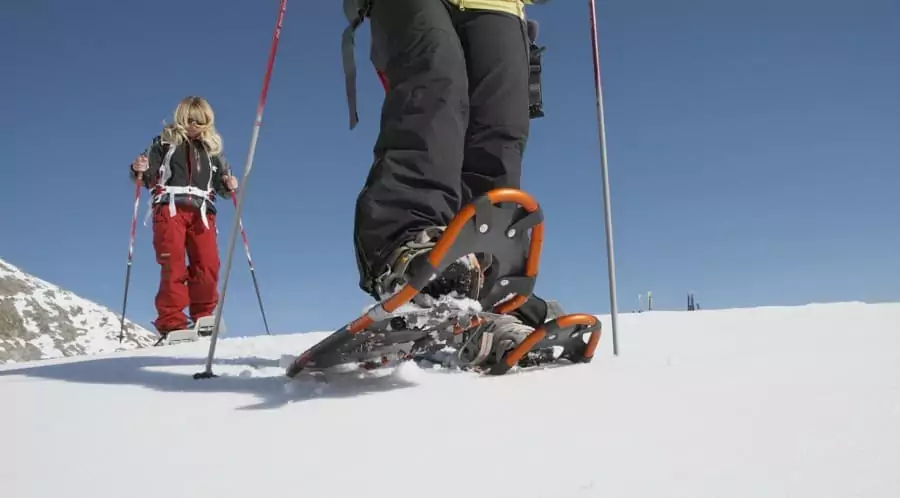
Snowshoes made of wood are still popular, as they are quite stealthy and don’t freeze. Wooden devices are called traditional on the market. The snowshoes are designed to not get stuck and not gather too much snow.
With a bit of an effort, users can handcraft their own snowshoes. While quality ash ones are difficult to make, a simple model made from spruce saplings is fairly easy to assemble.
Who Uses Snowshoes?
In the past, they were used by people who needed to cross vast snowy plateaus, such as hunters and lumberjacks, trappers, traders, and wanderers. Different native groups from North America used various designs, but a snowshoe was known everywhere.
Today it has grown in popularity among users who like to trek outdoors in winter. It’s used in sports by outdoor runners and racers who wish to train all year round, by recreational walkers, as well as by people who work outdoors in a winter season.
Some people combine walking on snowshoes with skiing and snowboarding to reach remote areas, which are not suitable for skiing.
A sports equipment should be purchased from an experienced manufacturer, but snowshoes used for travel can be made with DIY methods.
What Type of Snowshoes to Choose?
There are a few types of snowshoes. Their shape and features depend on their intended use, so people should consider their plans before selecting an optimal model.
Sports shoes serve people, who like to run and walk even in winter when prepared jogging tracks are not available. These days there are special sports events organized for racers in Canada. Snowshoeing sections are featured in multi-sport winter events as well.

These shoes are light and relatively small. While they allow for a very quick movement, they aren’t suitable for wilderness treks through a fresh snow.
Snowshoes intended for long distance trips through remote, snowy areas are much longer and a bit wider, than sports models. To stand on the top of the snow, wanderers need a large surface of the shoe to evenly distribute their weight on the deeper layer of snow.
These models are used for backpacking trips through the wild areas. They are popular among skiers, who often need to cross wilderness to get to their chosen skiing spots. If you make your snowshoes yourself, that’s what you will get.
People, who would like to walk over icy areas or climb hills should choose the type of snowshoes which can accommodate these activities, as doing that on the standard ones can be dangerous due to the lack of sufficient traction.
Occasionally, even mountaineering snowshoes don’t provide enough balance and walkers must use crampons. For some tips on how to snowshoe, see our must-read article on this.
Advantages of Traditional Snowshoes
Traditional snowshoes made from wood and animal hides served northern Indians for centuries. Natives used them to hunt, track prey and travel through snow-covered landscapes.
While wooden ones tend to be much heavier than those of modern construction, they are also much stealthier. For this reason, some hunters use them to this day.
However, their weight means that it’s more difficult to cover large distances and wanderers are more likely to get injured due to overworking their muscles.
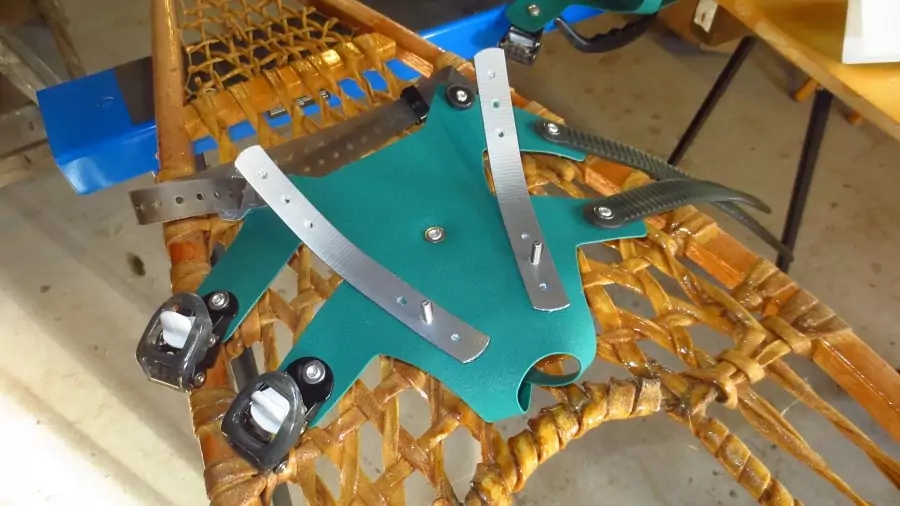
Unlike the shoes, which are made from aluminum, the wooden frames don’t freeze. They are quite decorative. Tourists in the North America often buy them as souvenirs to memorize their travel and display the gear on the wall as the decoration. The type of decoration and patterns was typical for various cultures – each tribe had their specific design. Are you new to snowshoeing? Then, read our guide on the best beginner’s snowshoes for added insight – check it out.
Which Size of Snowshoes to Choose?
Different models of snowshoes feature a different contact surface area and benefit different types of users. Any gear intended for runners who move along prepared tracks has relatively small shoes, which can be moved easily.
On the other hand, wanderers who travel through a thick layer of loose, fluffy snow need a wide, long snowshoes to be able to stay on the top of the snow.
The size of a snowshoe will depend on the weight of its user as well. A small snowshoe would be sufficient for a child, but an adult who weighs 200 pounds would require large snowshoes, long, tough and wide to stay on the surface instead of getting stuck in the snow.
The weight on a square inch of a snowshoe seems to be a decisive factor here. Manufacturers usually provide necessary ratings, but to be on the safe side you’d best ask experienced snowshoers for an advice, especially when you intend to make your snowshoes yourself.
How to Make DIY Spruce Snowshoes?
Spruce snowshoes are not very durable and will probably turn out as a one-use equipment. However, they can turn out indispensable during your wilderness adventure.
It’s easy to make your own if you have an ax or knife and follow a few simple steps:
- Find two young spruce saplings of a similar height – preferably around 3 feet. Pull them out with roots. Each plant will provide one snowshoe.
- Use a knife or an ax to cut off all side branches; keep all these twigs, though. The stem can provide a shoe frame, roots can make bindings and supports and branches can fill out your construction.
- Bend the tree stem and tie its ends together with roots to form a tear-shaped frame of the shoe. Make sure to reinforce the knot so that it doesn’t come apart under the weight of a traveler.
- In the widest part of the shape connect the frame on both sides with a tied root. Then, tie a few more roots alongside it. Finally, loop one more root clockwise around the bundle and secure its ends.
- This part of a snowshoe will support your boots; make sure it’s taut. Cover all the knots with tree sap to prevent the structure from sliding on the frame. Tie a few thin roots around sap-covered knots to protect them from damage.
- Select long root and tie its one end around the left knot and the other one around the top point of the frame. Make sure the loop in the top is loose; you will reinforce it later. Repeat it with the right side.
- Choose a strong root and use it to tie both loops together. Then, loop it around a new tie to reinforce it and attach better to the frame. Again, apply some tree sap to stabilize the new knot on the frame.
- Select two long roots and tie one of their ends around the knot on the pointy end of the frame. Tie their other ends to the central beam so that they are circa 5 inches away from each other.
- Now take three solid roots and tie them to the frame parallelly to each other and spaced evenly. Make sure they are tied around the perpendicular strings. Cover all the knots with sap.
- To finish off the construction, attach all the remaining spruce twigs weaving them between all the strings in the snowshoe frame.
- Repeat the steps 3 to 10 to make another snowshoe from the other sapling.
- Use roots to tie your boots to the central beams on the snowshoes. Enjoy!
A Few Snowshoeing Tips
People, who are not used to walking on snowshoes can get quite tired and suffer muscle aches for a few days after the effort. This activity puts a particular strain on upper legs and backside muscles.
It’s best to go easy for a few days at the start of a new season, to get used to long stretches of a demanding physical activity.
People, who plan their trips in advance would benefit a lot from strategically strengthening appropriate muscle groups in the gym and building up their endurance a bit.
These walkers who first cross through a vast area covered with fresh snow, need to put more effort to snowshoe through it. After being trodden a few times, a new path with a compacted snow appears on the surface and then it can be covered more easily.
When you walk with a group, it’s best to let most experienced and strongest snowshoers lead the team, occasionally shuffling their positions.
Snowshoeing and Ski Running
In some areas crossing the terrain on snowshoes was more popular, while in other regions, most local travelers used skis to move efficiently on the surface of the snow. There was a cultural preference for one type of gear or another, but practical reasons were quite essential as well.
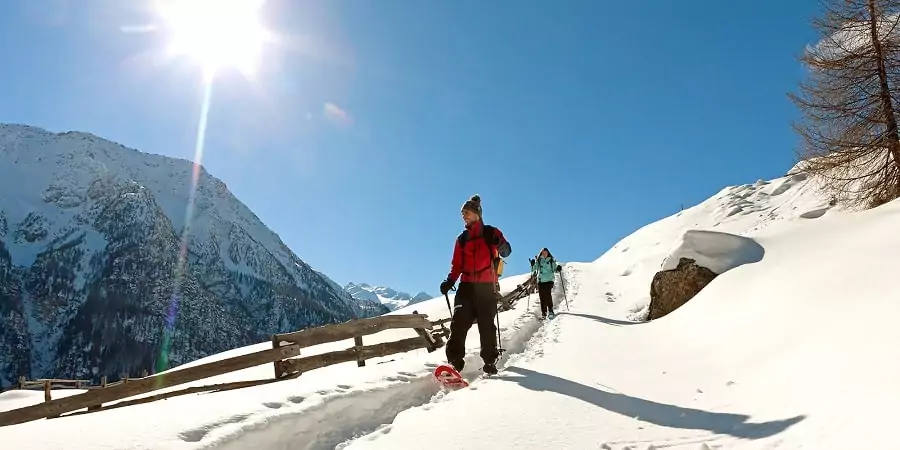
Snowshoes served best in the flat areas covered with a deep, fluffy snow, while skis were used on hard surfaces like ice and uneven terrain, which required travelers to alternatively climb and move downhill. Today, one will often find parallel tracks for both modes of travel in many areas.
Some backpackers like to alternate both modes of communication and use each of them wherever it’s more efficient than the other one. For this purpose, it’s best to select snowshoes which can be attached to ski boots and backpacks.
As skis tend to be heavy, choose the lightest model to carry them around on your back. Of course, making simple DIY snowshoes is much easier than manufacturing homemade skis; if you need to improvise something quickly, go with spruce snowshoes.
Snowshoers, who come across ski tracks on the snow should stay away from them and produce their own path parallel to the other one. Moving on the ski track on snowshoes doesn’t provide any benefits to snowshoers, but makes the sport more difficult and annoying for ski runners.
A Necessary Gear and Its Maintenance
Traditional snowshoes made from wood and animal hides must be conserved frequently to keep them waterproof. Users typically sand them a bit and cover with a few layers of varnish.
Modern gear made from plastic and metal doesn’t require any particular maintenance. After the end of a season, walkers should clean and dry their shoes before storing them for the next winter.
As the frame of a snowshoe can crack during the travel, users should carry along special repair kits, which allow for splinting and fixing of damaged gear.
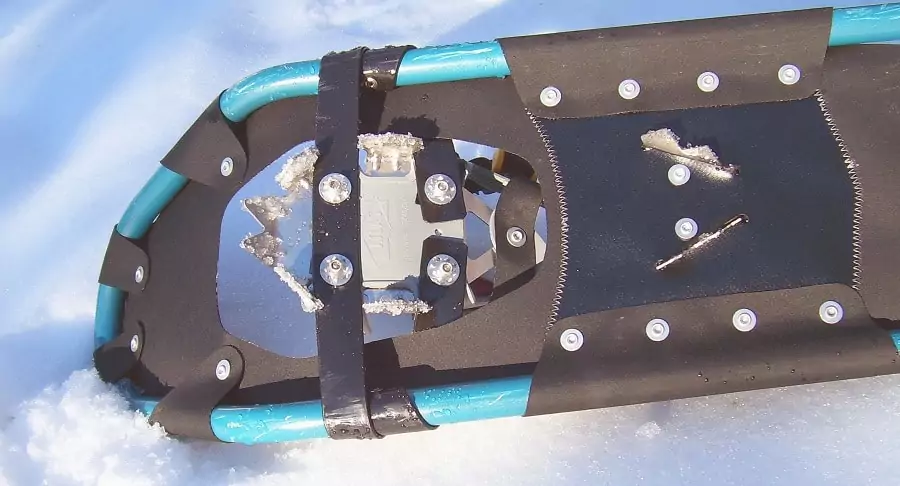
Most bindings are sold separately from snowshoes so that users can choose models most suitable for their purpose. Generally, bindings appropriate for uneven terrain are awkward to use during standard walks.
Many walkers like to use trekking poles to move efficiently. Some reuse their ski poles, while others prefer ones designed specifically for snowshoeing and featuring wider baskets. Trekkers using homemade spruce snowshoes like to use DIY poles made from tree branches.
Backpackers who travel over a pristine snow often use gaiters to prevent deep, fluffy snow from getting into their shoes. It’s best to have a carry bag, which can be attached to a backpack, for storing snowshoes during the camp.
As the sport takes place in the middle of winter, trekkers must remember to wear warm, dry clothes and take sufficient supplies for their trip. See our experts’ tips on how to choose the best snowshoes for your needs.
Sports Events for Contestants on Snowshoes
Decades ago snowshoeing used to be connected with survival in the frozen wilderness. Later, the activity attracted many backpackers, travelers, and adventurers. Today, it’s becoming an established sports discipline.
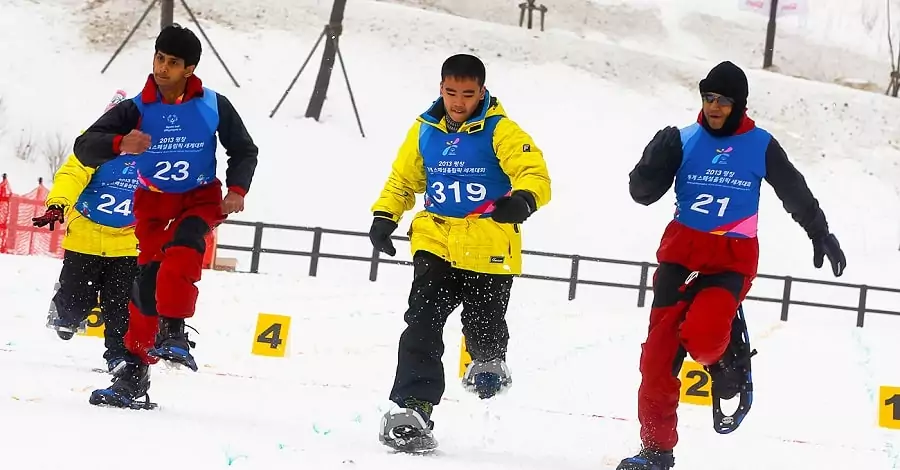
Some consider it a winter equivalent of jogging and racing while taking part in multiple contests. Some of these sportsmen are runners, who exercise on track during warmer seasons; others exclusively stick to snowshoeing during winter.
Most of these championships take place in Canada and US, which are attempting to popularize this attractive sport.
People who like extreme sports often compete in winter challenges, which feature different disciplines. Typically, sportsmen who take part in such contest are expected to cross a long distance in the wilderness, using different modes of movement on various segments of the track. A winter challenge can include kayaking, snowshoeing and skiing.
Benefits of Snowshoeing
Snowshoeing is a physically demanding, yet attractive open-air activity, that helps people burn a lot of calories and maintain a fit shape. It appeals to many youngsters, who like the sense of adventure and companionship tied with snowshoeing trips.
This form of exercise can be quite enjoyable and provide unforgettable impressions to walkers. Backpackers, who visited a given area during a summer holiday, will be surprised to see how differently it looks during the winter when it’s covered with a thick layer of fluffy snow.
Many professional sportsmen, who take part in summer team activities, can get out of shape during a cold season. These players who manage to maintain their form during their months off to enjoy a competitive edge at the start of the next season.
Winter activities which can be done together integrate team members and improve their physical conditioning. Endurance sports such as walking on snowshoes and ski running, especially excel at this.
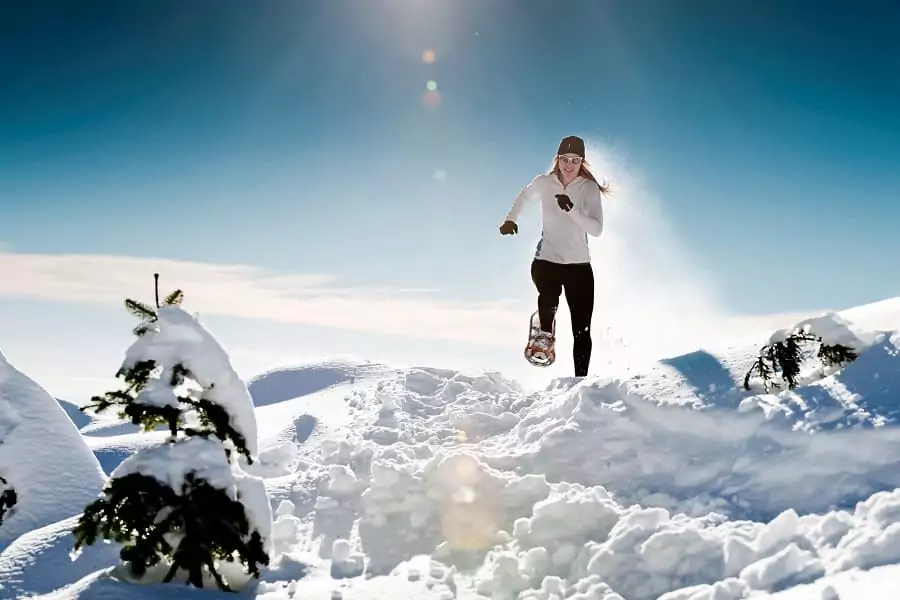
Backpacking on snowshoes becomes increasingly popular as an attractive winter outdoor activity. Some people prefer brief walks, while others like to cross wide areas in the wild, carrying all the necessary gear on their backs and camping in the wilderness. Wanderers use different snowshoe models to comfortably move on the thick layer of a fresh snow. Some have acquired lightweight, modern aluminum or plastic shoes, while others prefer traditional wooden gear because of its stealth.
In a pinch, you can craft your own pair to use in an emergency. Everyone who likes to stay away from civilization during the winter season should know how to make simple snowshoes from spruce saplings. If you liked our article and would like to let your friends know about what you learned here, feel free to share it.
Before you head on to your next slope, see our well-read article on the best snowshoes to use for a memorable and safe experience on the ice.
Also, if you have questions, you can leave a question in the comments section below, and we will do our best to give you an answer as soon as possible.

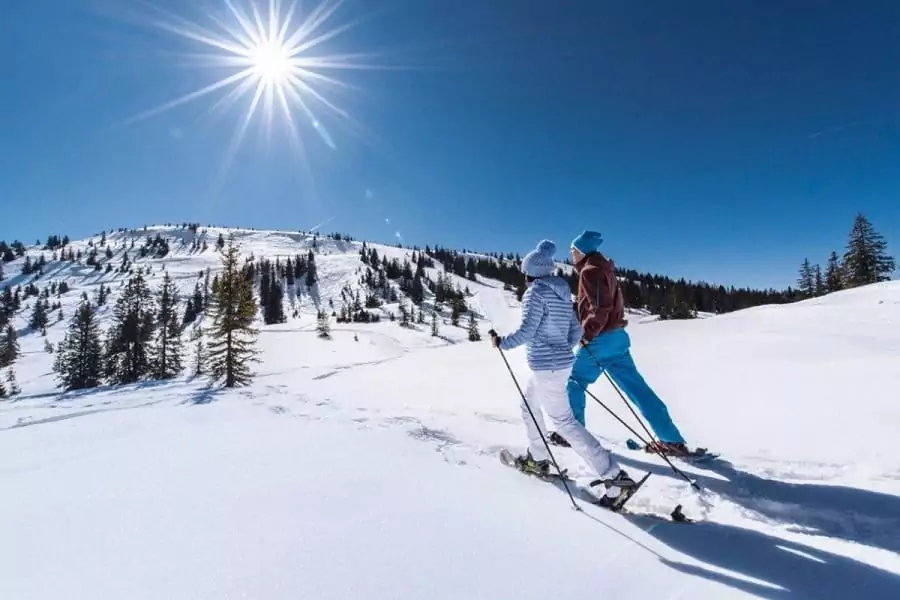
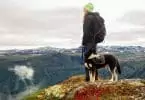

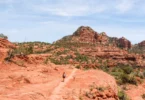

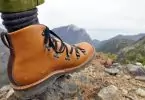
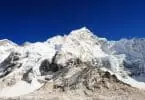
I recently bought my second pair of snowshoes from Amazon and I love them. The Alps Performance Light Weight Snowshoes are wide enough and trap onto my feet with glove-like fitting. I used them four days straight and did not get any issues. I enjoyed the trail so much better than those who had on regular shoes. From this article, it is good to know that I can even make my own snowshoes.
Hope you had a lot of fun walking or running on the snow with our snowshoes! Nothing quite compares to the experience of walking or trekking in a white blanket of snow. Doing so safely can be done when you have the right gear!
I honestly never thought of making my own snowshoes. The idea has never crossed my mind even once, well until I read this. In my mind, you want snowshoes, you go buy some. I guess we learn something new every day and this was my something new for today.
One of my friends who live in New Zealand make his own snowshoes. I know that not everyone will have the skill or the time to make one but the article did provide options for those who want to try it out.